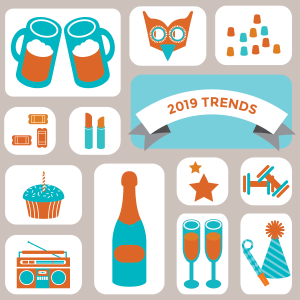
 Don’t you love the new year? 2019 will be the year of the pig, the year of living coral, the year of amazing events and big moments.
Don’t you love the new year? 2019 will be the year of the pig, the year of living coral, the year of amazing events and big moments.
Kick it off right with our annual trends list.
1. Fika
Hygge made our 2017 event trends list and we’re happy to report the phenomenon of knits, candles, and fireplaces is still going strong. Enter Fika – the art of the Swedish coffee break. Like Hygge, Fika is all about the simple things in life—a cup of joe, good conversation and a pastry to go with it. How will this make it into the events’ world? Fika is the perfect theme for networking events and conferences and sounds a lot cooler than “coffee and pastries.”
2. The Ultimate Experience
According to the CWT Meetings and Events report, “treehouses, rooftops, and even islands will become increasingly popular.” Attendee experience is everything and we’re seeing that reflected in 2019 event trends. Instagram use is on the rise and so are “experience” museums. Like the Museum of Ice Cream, the Rose Mansion and the Museum of Pizza (#MoPi). Because of this new er … culture, expect to see more uses of alternative and unusual venues.
If you have a space that sits empty some of the time, check out our webinar on transforming any space into a working venue.
3. Japan
CWT Meetings and Events also reported that the land of the rising sun will be hot, hot, hot in the coming year. Japan will host the Rugby World Cup in 2019 and the 2020 Olympics. Expect a surge of travel to the country and a lasting influence on event trends.
4. Themed Fitness
Goats and yoga. Beer and barre. Super hero 5ks. We’re seeing fitness events up the creativity with themes, beer, wine and/or animals. If it takes wine and mini-donkeys to get us all off the couch, so be it.
5. Wild Edibles
Mushrooms, truffles, fiddlehead ferns. Our Food and Beverage Coordinator reports that people are increasingly curious to try wild edibles. We will see this event trend appear in restaurants, but perhaps even more so at special dinner events and classes. It’s a re-connection to the natural world one plate at a time.
6. Supper Clubs
Many chefs are turning in their starched chef coats for an apron and forming supper clubs. And it’s not just the pros. Would-be home chefs are also hosting secret dinner parties. This is tied to the eat-at-home trend combined with a desire for slower, more intimate dining experiences. The overall appeal is interaction with the chef and other guests.
7. Dietitian-based Eating
With all of the special diets out there, families are looking for a custom meal plan to get them through the week. Those that seek to increase their productivity, stamina, lose weight, live longer, or just feel better are turning to both nutrition and biochemistry to get that edge. Not only will we see an up-tick in fad diets, dietitians and classes will be huge going into 2019. Specialty products in this arena have already started to creep into stores, and we should expect much more to come.
8. Culinary Cannabis
Cannabis, whether for recreation or medicine, will be on the menu in 2019. Legalization in many states has driven a huge influx of cannabis-based food businesses, including culinary schools. Those in the know have touted the health benefits of ‘sticky icky’ for a long time now, but the benefits are now recognized on a national level. We should see a rapid expansion of pot-based products, services, and events. Look out for tastings, pairings, pop-up dinners, and educational events.
9. Artisan Cooking Classes
We will see a rise in artisan cooking and maker classes focused on things like sourdough bread baking, cheese making, pickling, and curing meats. We aren’t talking about any old bread baking. We are talking about test-kitchen quality recipes taught by renowned artisans. With the increasing interest in eating at home comes the desire to eat well at home. This can be largely attributed to both economics and technology, such as home meal delivery services.
These events are popping up both in restaurant spaces as well as homes. Search for cooking classes near you.
10. Hotel Bars
Our friends at the Seattle Metropolitan spotted this event trend. Hotel bars are old-school glamorous. The martinis. The warm lighting. The mysterious guests: where are they from? Where are they going? Whether it’s a ground-floor bar or a rooftop terrace, hotel bars make a fantastic venue and offer exposure to a new, non-local, typically captive audience. Genius.
11. Video Event Promotion
If you want your event promotion to stand out, you got to have video. And no, shaky smartphone clips just won’t cut it. If you’re not a videographer, programs like Slidely can help you put together fun and interesting promotion videos for social media.
12. Chatbots for Event Organizers
Everyone is talking about voice assistants. Chatbots can help wrangle attendees and also assist planners in their own task management. Which is great because event planner consistently makes Forbes’ list of most stressful jobs. “Alexa, make my life less stressful please.”
That’s it for our event trends 2019. What do you predict as the next big thing in events?
Event Tips >

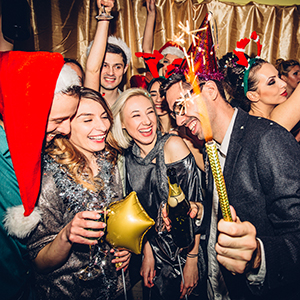
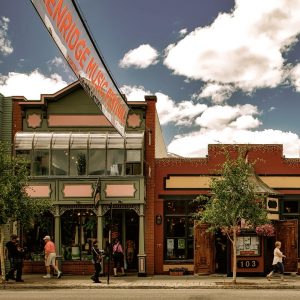





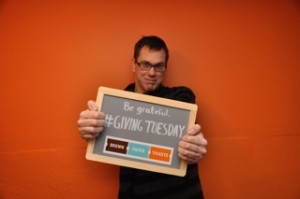
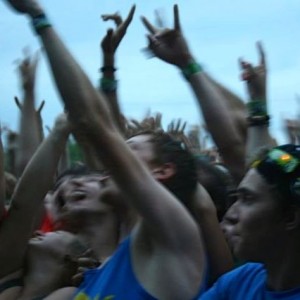
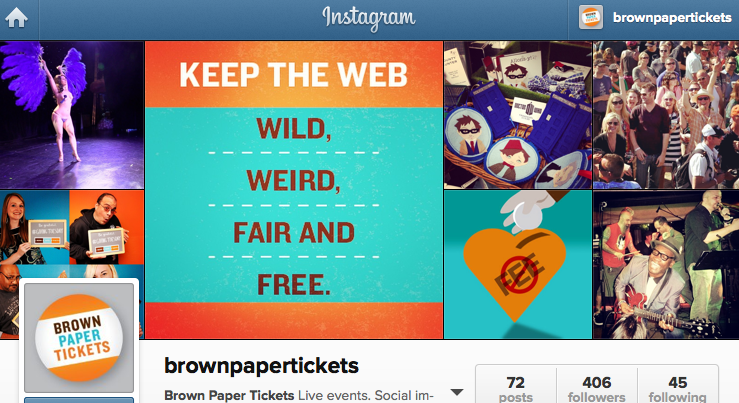
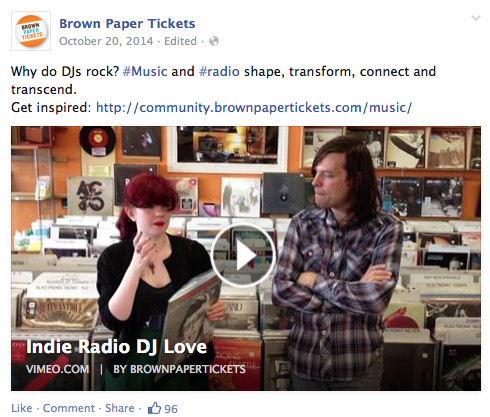
 Arts
Arts Comedy
Comedy Event Tips
Event Tips Film
Film Food & Drink
Food & Drink Good Causes
Good Causes Music
Music News
News Radio
Radio Roller Derby
Roller Derby